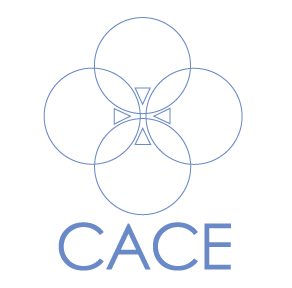What does it mean to write? Ancient Scribes and the Challenge of AI
Aubrey Buster, Ph.D., Associate Professor of Old Testament
I left our seminar together with more questions than answers, but they were (I hope!) better informed questions.
There were some answers:
Will large language models like Chat-GPT lead us inevitably to the sentience of machines? Well, no (at least according to Erik Larson[1]).
Will I be able to confidently identify a Chat-GPT written essay if my student turns one in? With a minimum of effort on the student’s part, the answer is already “no.”[2] And the rapid rate of improvement in large language models suggests that future versions of Chat-GPT and similar LLMs will only make this task more difficult.
Rather surprisingly, however, our seminar led me to question most strongly the very thing that I am supposed to be an expert in doing: teaching College students.
Many discussions about artificial intelligence center around the question, “What does it mean to be a human?” I am convinced by Erik Larson that human and machine intelligence are—at this point in time—fundamentally different, and the machine learning path that we are currently on will not lead inevitably to artificial intelligence. But I do think that LLMs urgently raise the question: “What does it mean to write?”
College students are learning how to learn. My job as a professor is to give them the tools appropriate to our discipline to gain—and eventually create—knowledge. At the undergraduate level, the means of this learning takes predictable forms. In my field, biblical studies, the standard assignment is the exegetical essay. In the process of writing these essays, students learn how to identify acceptable sources, what peer review is, and why it matters (though it is by no means perfect). They must engage in close readings of the text, compare English translations, and outline the structure of this passage. Then they must compare their own work to those of the scholars that come before them in order to practice the art of engaging with a scholarly community. One of my biggest pedagogical goals is for them to learn that they do not (and should not!) interpret alone. And then finally, they must express these insights in clear, well-structured prose, clear enough to communicate their ideas to their bleary-eyed professor when she is 38 essays deep into a 40-essay grading pile.
The only thing that ChatGPT cannot accomplish out of this list of tasks is the accurate citation of sources. At least, I should say, it cannot perform this task in its free version (the only one I’ve tried) at the point in time at which I am writing this essay (late May 2023). By the time this piece has been published, language learning models might have overcome this hurdle.
I cannot afford to ignore ChatGPT, as a professor or as a participant in society. ChatGPT has already become a significant writing aid for many students. College student Owen Kichizo Terry observes that ChatGPT is not only a tool to generate a standard 5-paragraph essay from scratch. Doing this often results in “an essay with a very general claim, middle-school level sentence structure, and half as many words as you wanted.”[3] Instead, it can generate a series of thesis statements or offer you a suggested outline. It can compare English translations of biblical verses (though it does slip up on occasion in referencing biblical stories that share common tropes. It gave me a very creative mashup in which Daniel and Vashti interact when I asked it to compare translations of Daniel 5!) Already a Grammarly plug-in on my own computer offers to suggest a subsequent sentence.
If a machine can accomplish many of the tasks that we consider to be necessary to the skill of writing, what does it mean to write as a human?
My primary vocation is as a scholar of ancient texts. In the ongoing discussion surrounding the impact of large language models on writing and education, I have found it helpful to be reminded by my ancient interlocutors that what writing is, its cultural and societal purpose, and the importance of its author, has changed over time. Our understanding of the relationship between writing and human thought and the role of writing in education is not necessary but contingent on many cultural developments and beliefs.
In the ancient Near East, the scribal arts were believed to have originated as a gift of the gods. The exact accounts of its origin varied. In one text, the human figure Adapa ascends into heaven where he learns the necessary arts of civilization. Another text tells the story of the Apkallu, demi-gods conceptualized as the great ancestors of the sages, who granted wisdom to humans. The scribes preserved this esoteric wisdom through their written traditions. Scribal knowledge was often protected, viewed as sacred, and secret. Writing was almost exclusively a tool largely reserved for this literate scribal class, a very different idea compared to our contemporary viewpoint that a standard education includes gaining the tools of basic literacy.
This view of writing as sacred and secret existed alongside a view of authorship very different from our own. Concepts of authorial ownership of texts, the necessity of original creativity, and basic ideas of the unchangeable texts, what Eva Mroczek calls “modern anxieties about bibliographic clarity,” were not characteristic of the ancient world.[4] Scribes were the mainstay of literary production, but they were not generally associated with their texts in a way that modern authors are.[5]
As Mroczek observes, our contemporary assumptions regarding the relationship between authors and texts derives primarily from our own modern conception of what it means to “author” a text: “For modern scholars, texts need an authoritative source—a reputable author—to be taken seriously; and so the idea that to attribute a text to a figure is intended to give that text legitimacy seems obvious.”[6] Sophus Helle describes the pre-modern author, in contrast, as a “textual mediator rather than original creator.”[7] In the classroom, it is not necessarily the legitimacy of ideas that is at stake, but the assumption that the student produced each word themselves or attributed those words to the human who had produced the words. Our idea of the “writer” in the classroom is much more akin to the ideal of writing as “original creation,” to use Helle’s terms. This is why we have rules concerning plagiarism and cheating. To turn in work is to claim that you wrote it and that the ideas are yours.
To be clear, I am not advocating for a return to an “ancient” understanding of authorship or writing. My point is only that our contemporary ideas regarding what writing is and what it is good for are culturally contingent. There is no “necessary,” “original” writing concept that we must recover. Our concept of what writing is and its relationship to the human mind has changed before. Perhaps the large language models will change the way that we think about writing and authorship yet again.
If we are indeed on the brink of a significant cultural change in our relationship with writing, my primary hope is that we can think through these changes intentionally with care and charity. Writing is, at the end of the day, a technology. It is a beautiful, powerful, empire-building and empire-resisting technology, but a technology all the same. It is a technology of formation, a tool to sharpen thinking, to express ideas, to communicate charity—or cruelty. What, then, is the writing tool of the large learning model good for? What can it do? Is there a way for it to strengthen our common human endeavor together? As Richard Gibson writes in a recent piece on education in the age of AI, “AI’s foremost challenge for higher education is to think afresh about forming humans.”[8] Our conversation together has caused me to question anew what kind of humans we would like to form and to ask how the production of the written word aids us in that goal.
[1] Erik J. Larson, The Myth of Artificial Intelligence: Why Computers Can’t Think the Way We Do (Cambridge, Massachusetts: The Belknap Press of Harvard University Press, 2021).
[2] Owen Kichizo Terry, “Opinion: I’m a Student. You Have No Idea How Much We’re Using ChatGPT.,” The Chronicle of Higher Education, 12 May 2023, https://www.chronicle.com/article/im-a-student-you-have-no-idea-how-much-were-using-chatgpt.
[3] Terry, “You have no Idea.”
[4] Eva Mroczek, The Literary Imagination in Jewish Antiquity (Oxford: Oxford University Press, 2016), 75.
[5] There are a few exceptions to this that largely prove the rule. Perhaps the most well-known example is Saggil-kīnam-ubbib, who claims to be the author of The Babylonian Theodicy. Most interesting in this regard is the Neo-Assyrian Catalog of Texts and Authors. For discussion, see Karel van der Toorn, Scribal Culture and the Making of the Hebrew Bible (Cambridge, MA: Harvard, 2007), 27-49.
[6] Mroczek, The Literary Imagination in Jewish Antiquity, 52.
[7] Sophus Helle, “What Is an Author? Old Answers to a New Question,” Modern Language Quarterly (Seattle) 80.2 (2019): 113.
[8] Richard Hughes Gibson, “A New Rule of Education for the Age of AI,” THR Web Features, 24 May 2023, https://hedgehogreview.com/web-features/thr/posts/a-new-rule-of-education-for-the-age-of-ai.
Contact Us
Center for Applied Christian Ethics
117 Blanchard Hall
501 College Ave
Wheaton, IL 60187

